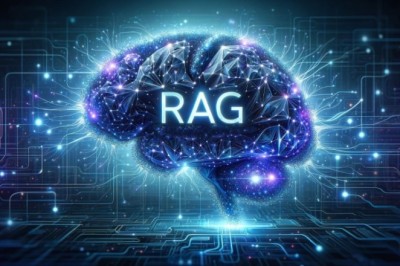views
Stimulant drug use has changed dramatically throughout the decades, not only in the kinds of drugs available on the legal and illicit drug market but also in the interesting changes in the legal status of certain drugs.
Today, certain stimulant drugs are legal that never existed decades ago, and other stimulants that almost anyone at the drug store could previously purchase can only be prescribed by medical professionals and for very limited occasions. This begs the question, are legal stimulants safer than illegal stimulants? Here’s what you need to know.
A Surprising Legal History of Stimulants
Stimulants is an umbrella term for various legal and illegal drugs. They all have in common their stimulating effect on the brain’s central nervous system and communication with the rest of the body. The result is either a subtle or intense experience of alertness and energy, depending on the stimulant used and how much.
Most people associate the illicit use of stimulant drugs with the two most popular examples: cocaine and methamphetamine. Surprisingly even these two drugs have an approved medical use by prescription, although this is not typical. While cocaine and meth might seem to have nothing in common with the more popular examples of prescription stimulant drugs such as Adderall, these stimulant drugs all share an interesting connection in the progress of drug epidemics and subsequent regulation and prohibition efforts.
Cocaine: The O.G. of Stimulants
At one time, cocaine had none of the regulations we have come to expect with this street drug, infamously being part of the original version of Coca-Cola and used recreationally throughout Europe and the United States. Until 1916, cocaine could be purchased over the counter in the United States. While methamphetamine, as we know it today, did not yet exist during this time, its forerunner did. In fact, while cocaine was eventually regulated and banned, its stimulant neighbor was used heavily by citizens and military professionals. This stimulant was amphetamine, and users relied on it heavily for anything, from energy to decongestion and even appetite suppression.
Stimulants 2.0 | Amphetamine
While people did not use amphetamines heavily until after the prohibition of cocaine in America, they quickly exploded in popularity. During the 1930s and well into the 1960s, you could find amphetamine in nasal decongestants, inhalers, diet pills, cigarettes, multivitamins, and much more. This era also represented the Second World War, and soldiers on both sides of the conflict were given amphetamine as part of their combat readiness. This represented the first era of stimulants used for productivity, with college students, motorcycle gangs, and athletes using the drug for its stimulating effects.
Stimulants 3.0 | Meth
By the 1980s, users began modifying amphetamine to produce the first widespread version of methamphetamine as we know it today. This drug is the predecessor of amphetamine and represents one of the most dangerous examples of many of the current trends in the United States drug epidemic. Since meth could be made from ingredients much more accessible than the coca plants of South America, meth quickly became a much more popular and cheaper stimulant compared to cocaine.
But while meth has taken the illicit stimulant drug market by storm, its predecessor, amphetamine, is still a serious threat today. In fact, it dominates the prescription stimulant drugs available, with Adderall being at the top of the popularity list. Despite its legal status, Adderall still carries a label description that relates well to the troubled history of amphetamines.
The Food and Drug Administration (FDA) has assigned Adderall its black box warning, stating that the drug has a high potential for abuse and addiction, especially when used long-term. The FDA also includes a sentence mentioning the risk of health related to “cardiovascular adverse events,” meaning that amphetamines like Adderall pose a serious risk of heart failure, even if taken as prescribed.
Legal vs. Lethal
Stimulant drug use trends continue to evolve over the years, with notable examples including Oregon’s recent attempts to decriminalize cocaine. It’s important to remember that a drug’s legal status does not determine how safe it is. Despite the ebb and flow of legal status for stimulant drugs, each of the examples mentioned has troubling statistics to prove that legal does not always mean safe for use. In fact, none of these drugs have proved to be safe. While there are legitimate medical uses for almost all stimulant drugs, they all carry a high risk for abuse, addiction, and overdose death.
Because of this, it is important to seek medical help from trained professionals if you or someone you know is addicted to any of these stimulant drugs. Despite their legal status, stimulant drugs can be (and often are) lethal.
Sources
DEA. (2020, June, 5). Stimulants: Drug Fact Sheet. Retrieved https://www.dea.gov/documents/2020/2020-06/2020-06-05/stimulants-drug-fact-sheet
Delphi Health Group. (n.d.). Stimulant Addiction. Retrieved https://delphihealthgroup.com/stimulants/
Mayo Clinic. (2023 Feb 1). Cocaine (Topical Route). Retrieved https://www.mayoclinic.org/drugs-supplements/cocaine-topical-route/proper-use/drg-20063139?p=1
Healthline. (2022 January 26). The 14 Best Nootropics and Smart Drugs Reviewed. Retrieved https://www.healthline.com/nutrition/nootropics
FDA. (2007, March). Drug Facts and Labeling: Adderall. Retrieved https://www.accessdata.fda.gov/drugsatfda_docs/label/2007/011522s040lbl.pdf
Salon. (2013 December 7). A Brief History of Cocaine. Retrieved https://www.salon.com/2013/12/07/a_brief_history_of_cocaine/
Smithsonian Magazine. (2017, October, 27). A Speedy History of America’s Addiction to Amphetamine. Retrieved https://www.smithsonianmag.com/history/speedy-history-americas-addiction-amphetamine-180966989/
PBS Frontline. (n.d.). Meth Timeline. Retrieved https://www.pbs.org/wgbh/pages/frontline/meth/etc/cron.html
Rockefeller Institute. (2020, July, 28). The Second Wave of the Methamphetamine Epidemic. Retrieved: https://rockinst.org/blog/the-second-wave-of-the-methamphetamine-epidemic/
Delphi Health Group. (n.d.). Meth Addiction Signs and Treatment. Retrieved https://delphihealthgroup.com/stimulants/methamphetamine/
NPR. (2021 June 18). Oregon’s Pioneering Drug Decriminalization Experiment is Now Facing the Hard Test. Retrieved https://www.npr.org/2021/06/18/1007022652/oregons-pioneering-drug-decriminalization-experiment-is-now-facing-the-hard-test
NIH. (2009, March, 14). Adderall and Cardiovascular Risk: A Therapeutic Dilemma. Retrieved https://www.ncbi.nlm.nih.gov/pmc/articles/PMC2690554/






















Comments
0 comment